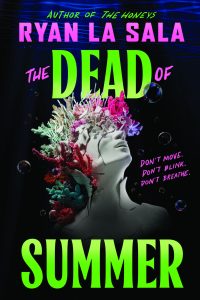
Bonnie Garmus’s breakout novel has been called funny, sharp, and empowering. It is also divisive in the best conversation-starting way. Lessons in Chemistry follows Elizabeth Zott, a brilliant chemist in the early 1960s whose career is derailed by sexism at every turn. After personal tragedy, she becomes the reluctant host of a TV cooking show, teaching viewers to braise short ribs and challenge the status quo in the same breath. The result is a fizzy blend of satire, social critique, and found family that has captured millions of readers and inspired a screen adaptation.
The setup
Elizabeth Zott refuses to shrink herself to fit a lab coat. At Hastings Research Institute she is dismissed, underpaid, and routinely undermined, with the glaring exception of Calvin Evans, a gruff, award-nominated chemist who falls for her mind first. Life swerves, and Elizabeth ends up a single mother to precocious Madeline and the star of Supper at Six, where she translates chemistry into home cooking. A teaspoon of acetic acid becomes vinegar, a pinch of sodium chloride becomes salt, and a recipe becomes a small manifesto. As her audience grows, so does the backlash, because Elizabeth is not just teaching women to cook. She is teaching them to think.
What works
- An unforgettable heroine. Elizabeth is prickly, principled, and unembarrassed by her own intelligence. She is the kind of protagonist readers cheer for, even when she refuses to make the easy choice.
- Voice that pops. The prose is brisk and witty, with a comedy-drama tone that turns domestic scenes into arguments about agency, work, and who gets to be a genius.
- Found family charm. Six-Thirty the dog, neighbor Harriet Sloane, and TV producer Walter Pine give the book its big heart. Their loyalty balances the institutional hostility Elizabeth faces.
- Big themes with broad appeal. The novel tackles gender bias in STEM, pay inequity, motherhood, and the cost of being the first person to say no. Readers who want a heroine pushing against her era will find plenty to savor.
Where readers split
- Tone whiplash. Some scenes are deadly serious, including assault and homophobia, while others are played for satire or whimsy. For a number of readers, that mix feels jarring rather than seamless.
- Historical plausibility. Critics argue that certain outcomes are too neat for 1960, and that the social pushback Elizabeth faces can seem light compared with what her on-air provocations would likely trigger.
- Science as flourish. The chemistry conceit is clever, but readers with technical backgrounds may find some terminology and metaphors eye-roll inducing.
- White feminist lens. The book foregrounds gender while keeping class and race mostly offstage. Your mileage will depend on whether you read the story as allegory or expect deeper intersectional texture.
Style and pacing
Garmus favors crisp chapters, punchline-ready dialogue, and crowd-pleasing set pieces, especially in the TV studio. The throughline of Elizabeth’s stubborn integrity keeps the plot moving even when the tonal blend leans exaggerated. If you enjoy character-driven fiction with a satirical edge, the pacing delivers.
Bottom line
Lessons in Chemistry is a buoyant, provocative crowd pleaser that doubles as a conversation starter about women’s lives at work and at home. It will frustrate some readers and floor others. Either way, it gives you a heroine who refuses to apologize for being the smartest person in the room and a story that makes ambition feel radical and domestic life feel revolutionary.
Recommended for: readers who love resilient heroines, STEM-flavored fiction, found family dynamics, and book club debates
Content notes: sexual assault, grief, workplace sexism, homophobia
Ready to meet Elizabeth Zott and decide where you land


